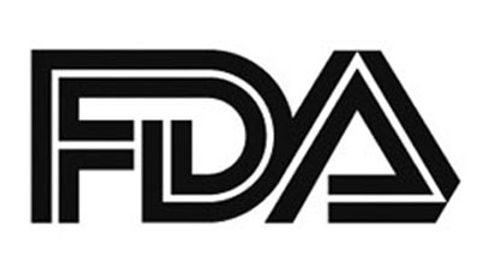FDA Approves KTE-X19 CAR T-Cell Therapy for R/R Mantle Cell Lymphoma
The FDA has approved brexucabtagene autoleucel for the treatment of adult patients with relapsed or refractory mantle cell lymphoma.

The FDA has approved brexucabtagene autoleucel (formerly KTE-X19; Tecartus) for the treatment of adult patients with relapsed or refractory mantle cell lymphoma (MCL).1
“Despite promising advances, there are still major gaps in treatment for patients with MCL who progress following initial therapy,” said lead investigator Michael Wang, MD, professor, Department of Lymphoma and Myeloma, Division of Cancer Medicine, The University of Texas MD Anderson Cancer Center, in a statement. “Many patients have high-risk disease and are more likely to keep progressing, even after subsequent treatments. The availability of Tecartus as the first-ever cell therapy for patients with relapsed/refractory MCL provides an important option with a response rate of nearly 90 percent and early clinical evidence suggesting durable remissions in later lines of therapy.”
Approval for the autologous CD19-directed chimeric antigen receptor (CAR) T-cell therapy was based on findings from the phase 2 ZUMA-2 trial.
The single-arm, multicenter, open-label study enrolled 74 patients with histologically confirmed MCL who had either cyclin D1 overexpression or translocation t(11;14) and relapsed/refractory disease after up to 5 prior treatment regimens. Previous treatments were required to include an anthracycline- or bendamustine-based chemotherapy, an anti-CD20 monoclonal antibody, and BTK inhibition with ibrutinib (Imbruvica) or acalabrutinib (Calquence).
Eligible patients underwent leukapheresis and received conditioning therapy of fludarabine and cyclophosphamide for days –5 to –3 prior to infusion. KTE-X19 was administered in a single intravenous infusion at 2 x 106 CAR T cells/kg.
Successful KTE-X19 manufacturing was achieved for 71 patients (96%) and treatment was administered to 68 (92%). The median time from leukapheresis to delivery of KTE-X19 was 16 days.
The primary end point was objective response rate (ORR) by independent radiologic review committee and secondary end points included duration of response (DOR), progression-free survival (PFS), overall survival (OS), and safety.
Of the 68 treated patients, the median age was 65 years (range, 38-79). Thirty-one percent of patients had blastoid or pleomorphic characteristics and 56% had intermediate- or high-risk disease. Seventeen percent had a TP53 mutation and 82% had a Ki-67 proliferation rate of at least 30%. The median number of prior therapies was 3 (range, 1-5) and 43% underwent autologous stem cell transplantation.
Findings from the first 60 patients treated who were followed for at least 7 months were published in the New England Journal of Medicine. Among these 60 patients, the ORR was 93% (95% CI, 84%-98%), including a complete response in 67% (95% CI, 53%-78%). Overall, the ORR was 85% with complete responses in 59%. Among 29 patients with evaluable minimal residual disease, 83% had no detectable residual disease as of week 4. Responses were consistent across patient subgroups of high-risk features.2
The 1-year estimated PFS rate was 61% and the estimated 1-year OS rate was 83%. At 6 months, the PFS rate for patients with poor prognostic features was consistent with that of the overall population.
Adverse events of grade ≥3 were observed in 99% of patients, with the most common being cytopenias in 94%—neutropenia (85%), thrombocytopenia (51%), and anemia (50%)—and infections in 32%. Serious adverse events were reported in 68% of patients.
Cytokine release syndrome (CRS) was reported in 91% of patients with 15% being grade ≥3 in severity, but none of the cases were fatal and all of the cases resolved within a median of 11 days. Sixty-three percent of patients had neurologic events with 31% being grade ≥3 in severity, but none of the cases were fatal and 86% of cases resolved fully.
Twenty-four percent of the patients died on study, with 21% due to progressive disease and 3% due to grade 5 adverse events of organizing pneumonia from the conditioning chemotherapy and one case of staphylococcus bacteremia.
An analysis presented at the 2020 American Society of Clinical Oncology Virtual Scientific Program showed pharmacologic data for KTE-X19 was comparable across patient subgroups by risk status. The pharmacodynamic profile was associated with efficacy and grade 4 treatment-emergent neurologic events.3
“Kite is committed to bringing the promise of CAR T therapy to patients with hematological cancers, and as such, we are proud to launch our second cell therapy,” Christi Shaw, CEO of Kite, said in a press release. “I extend my thanks to the patient study participants, caregivers, clinical researchers, regulators and dedicated colleagues at Kite who helped make this approval possible, and we look forward to partnering with the lymphoma community to deliver this potentially transformative therapy to patients with relapsed or refractory MCL.”
On the product label for brexucabtagene autoleucel there is a Boxed Warning for the risk of CRS and neurologic toxicities. The FDA has approved a Risk Evaluation and Mitigation Strategy program for the CAR T-product, which has been combined with that of axicabtagene ciloleucel (Yescarta), to inform and educate healthcare professionals about such risks.1
Brexucabtagene autoleucel will be manufactured in Kite’s commercial manufacturing facility in El Segundo, California.
References
1. U.S. FDA Approves Kite’s Tecartus™, the First and Only CAR T Treatment for Relapsed or Refractory Mantle Cell Lymphoma. News release. Gilead. July 24, 2020. Accessed July 24, 2020. https://bit.ly/2EkuQBv
2. Wang M, Munoz J, Goy A, et al. KTE-X19 car t-cell therapy in relapsed or refractory mantle-cell lymphoma. N Engl J Med. 2020;382(14):1331-1342. doi:10.1056/NEJMoa1914347
3. Wang M, Rossi JM, Munoz J, et al. Product characteristics and pharmacological profile of KTE-X19 in patients (pts) with relapsed/refractory (R/R) mantle cell lymphoma (MCL) in the phase II registrational ZUMA-2 trial. J Clin Oncol. 2020;38(suppl 15):3023.








